George Malcolm Beal House (A.K.A. Beal-Charlton House)
Introduction
Text-to-speech Audio
George Malcolm Beal designed and resided in the historic home while shaping the transition of the architecture program at the University of Kansas (KU) from classical to modern. Designed in 1950, Beal expanded upon Frank Lloyd Wright's Usonian design principles by engineering his house to take full advantage of solar gain, using calculations derived from the original heliodon astronomical instrument he designed and built. After Beal retired, Betty Jo Charlton, KU's first female engineering student and Lawrence's first woman legislature, purchased the home; she lived there from 1971 to 2014.
Images
George Beal demonstrating his Heliodon invention, 1953
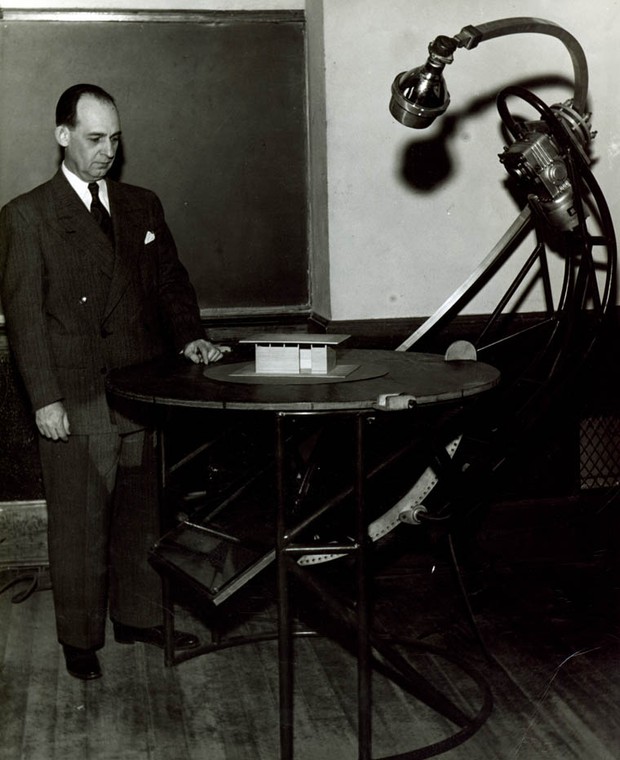
South elevation of the Beal House
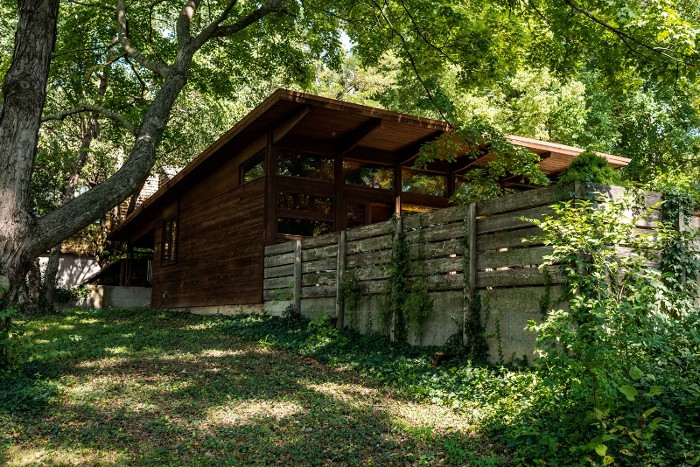
Living room and its ample sunlight
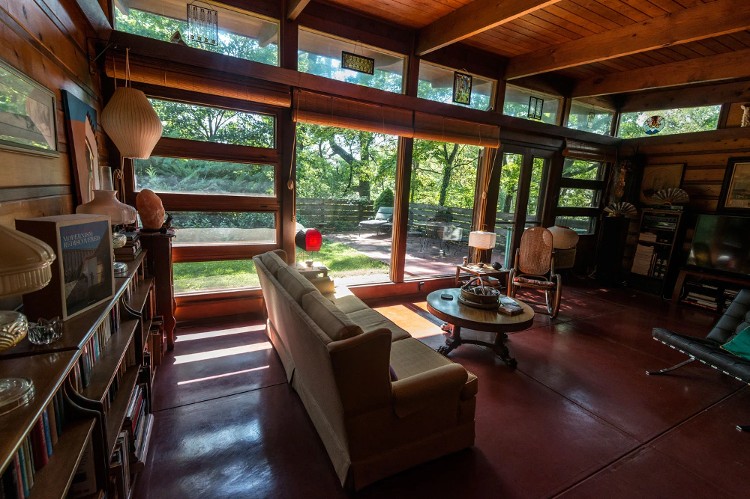
Backyard during autumn
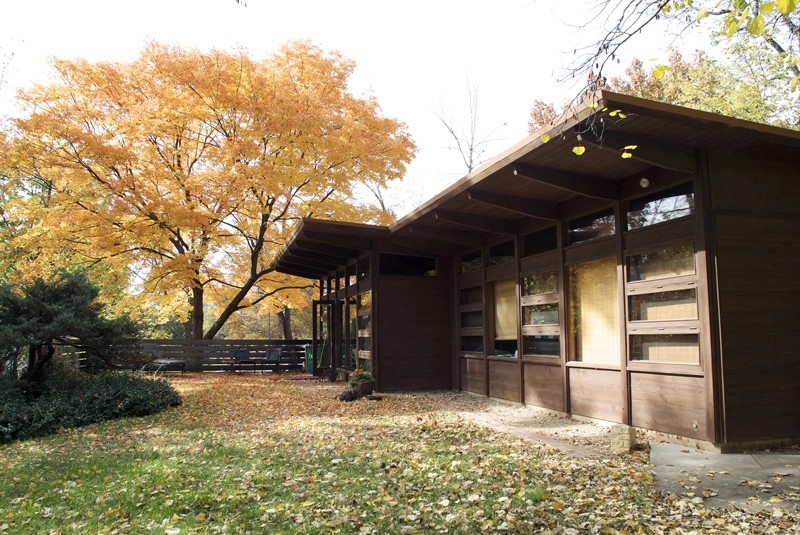
Beal House
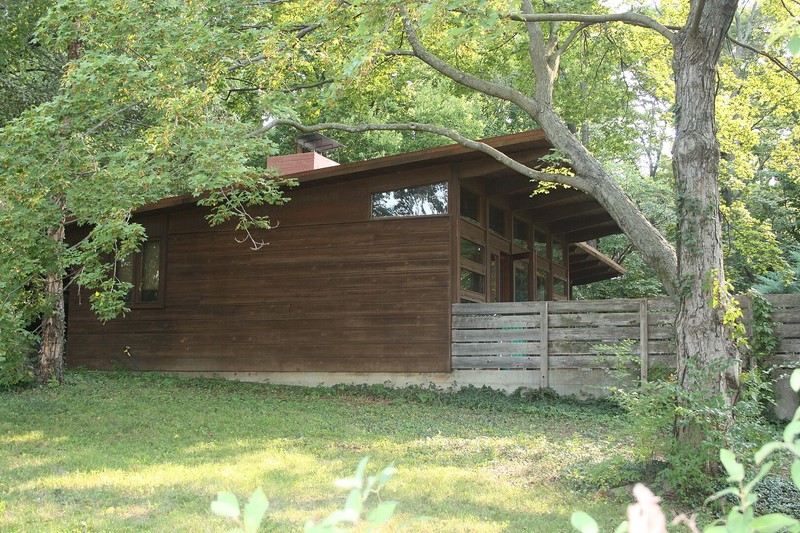
Betty Jo Charlton (1923-2014) at the "Beal House" during the mid-1980s.
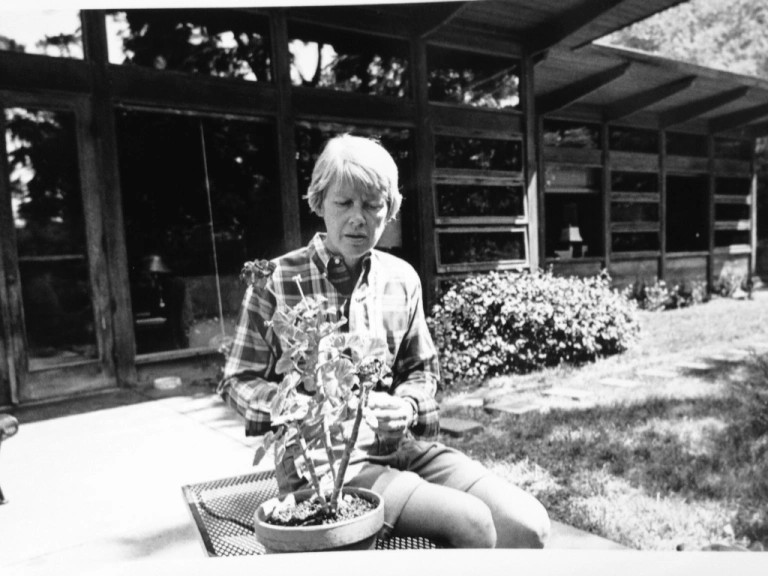
Backstory and Context
Text-to-speech Audio
Born and raised in Topeka, Beal (1899-1988) served in the US Navy from 1918 to 1920 before attending the University of Kansas. He graduated with a BS in architecture and a BS in architectural engineering. In 1925, KU hired Beal as an instructor of architecture. Beal spent the first ten years of his career getting married, studying in France, working alongside Frank Lloyd Wright, and advancing his career. After marrying Helen Rutledge in 1926, the couple moved to Paris, France, for Beal to complete a certificate in architecture at the Fontainebleau School of Fine Arts. He returned to KU in 1928 as an associate professor of architecture. Beginning in the late 1920s, Beal became the first architecture professor permitted to teach non-classical architectural courses in 1928, the first modern academic teaching nationwide. In the summer of 1934, he joined Frank Lloyd Wright in Wisconsin as an honorary Taliesin Fellow, the only known academic architect to do so (Wright and he remained friends for the rest of their lives). In 1936, KU promoted Beal to full professor of architecture.
Beal proved to be a highly innovative architect (as he demonstrated later through the design of his now-historic home). Besides modernism, Beal was fascinated with harnessing the sun's energy, believing it was valuable in architectural engineering (heating and light) and vital for the health and well-being of humankind. In 1931, his architecture classes developed a set of charts that measured the seasonal variations of the sun's movement. The study of the sun influenced his 1937 design of the Chewning House, the first all-electric and contemporary house in Lawrence.
His fascination with solar energy led him to design his "Inside-Outside Heliodon," a solar simulator for architectural scale models; it allowed architects to see the sun's effect on both the inside and outside of a house. He finished his designs in 1938 and built the first model in 1939. Academics from around the nation and England eventually used his Inside Outside Heliodon in their work. Beal's research and application of solar energy in architecture and engineering led KU into contemporary sustainability concepts.
Beal left KU in 1939 for a few years, initially to rejoin Wright in Wisconsin and then with the US Navy during World War II. When he returned from the war in 1945, he took the position of chairman of the architecture department; Beal held the chairmanship until 1962, when he became director of the university's architectural service.
George Beal adapted his friend Frank Lloyd Wright's organic architecture principles and employed Lawrence's only Usonian architecture, but it also included Beal's solar engineering. The Usonian house was Wright's response to his earlier Prairie houses, which had been intended for the lower-middle class but ended up appealing to wealthy business people. The Usonian house was Wright's Depression-era experiment in creating mass-produced, inexpensive housing where all citizens lived on the land in compact model houses that fully incorporated mechanized prefabrication. It also helped people escape the city by buying lower-cost homes in the suburbs and beyond. Beal incorporated his applications of sunlight into the overall Usonian principles, especially in his own now-historic home, which he designed and built in 1950. For example, unlike Wright's flat roofs, Beal applied a shed roof to his house because of its structural simplicity and solar significance. Beal's shed roof allowed the sun's path to track inside the southern exposure's windows during its winter crescent for maximum solar gain. Beal claimed he routinely left the boiler off on winter days because the sun effectively heated the house.
Two years before George retired in 1970, George and Helen Beal moved to the KU Sprague retirement apartments on campus, allowing State Representative Betty Jo Charlton, Lawrence's first woman legislator (1979 - 1994), to purchase the historic house. Betty Jo lived there from 1971 to 2014. Before politics, she drafted for Boeing in Wichita during World War II, having studied the craft at KU. Indeed, she enrolled as one of the first women in the KU. Engineering School. In addition to her BA in engineering, she received an MA in political science from KU. In 1979, Governor John Carlin appointed Charlton to fill a vacated seat in the Kansas House. She went on to serve seven more terms before retiring in 1994. During her tenure, Charlton revitalized the state's fledgling Democratic Party, sponsored the Kansas Land Trust Act while on the Energy & Natural Resources Committee, gained a Turnpike exit at Lecompton, Kansas, while on the Transportation Committee, and became the senior minority member of the House Appropriations Committee, which approved all final annual State budgets, including KU's. Charlton also supported the Lawrence Preservation Alliance and served as a board member for the Douglas County Historical Society at the Watkins Museum in downtown Lawrence for multiple years.
During Charlton's ownership, she allowed engineering and architecture students to tour the home. While serving in Topeka during legislative sessions, she left a typed house description and history for the students to read as they toured the home. She died at age 91 in her home as she wished.
Sources
"Beal House." Lawrence Modern. Accessed April 3, 2024. https://lawrencemodern.com/bakers-dozen/university-place/.
Charlton, John and Amanda Loughlin. "Registration Form: Beal, George Malcolm, House." National Register of Historic Places. nps.gov. 2015. https://npgallery.nps.gov/GetAsset/8d241d45-6bb7-4df9-9f58-68965f08cedf.
Powers, Mathew. "Chewning House." Clio: Your Guide to History. January 8, 2024. https://www.theclio.com/entry/177096.
Lawrence Modern: https://lawrencemodern.com/bakers-dozen/university-place/heliodon/
Lawrence Modern: https://lawrencemodern.com/bakers-dozen/university-place/
Doug Stremel, Lawrence Modern: https://lawrencemodern.com/bakers-dozen/university-place/
Lawrence Modern: https://lawrencemodern.com/bakers-dozen/university-place/
By Andrew Johnston - Own work, CC BY-SA 4.0, https://commons.wikimedia.org/w/index.php?curid=62186099
Lawrence Modern: https://lawrencemodern.com/2014/08/03/in-memoriam-betty-jo-charlton/
